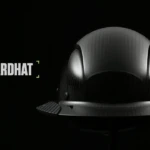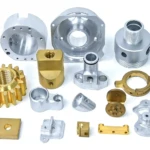Learn about the next frontier: Mastering 3D-bending aluminum with five-axis CNC machining
Making composite 3D curved aluminum components requires sophisticated dances with precise engineering and cutting-edge technology. From aerospace wings to medical implants, demand for perfectly carved aluminum parts is soaring. However, the generation of these geometries (with smooth transitions, free form surfaces and strict tolerances) divides traditional machining methods into their limits. Input five-axis CNC machining: a game-changer that enables manufacturers like Greatlime to turn these challenging designs into tangible high-performance parts.
Why 3D curved surfaces require five-axis CNC
Aluminum is valued for its lightweight durability and corrosion resistance, and is ideal for complex applications. However, due to limited tool angles and multiple settings, traditional three-axis CNC machines struggle with deep pockets, undercuts and composite curves. This leads to:
- Inefficient: Over-repositioning of parts, increasing labor and downtime.
- Inaccurate: Potential misalignment during fixation.
- Surface defects: Tool marks visible on curved parts or incomplete details.
Five-axis CNC machining eliminates these obstacles. By allowing simultaneous movement on five axes (X, Y, Z and rotating A/B axes), the tool approaches the workpiece from an infinite angle. This allows the smooth, continuous profile to physically mimic the curvature of the design.
Advantages of five-axis machining of 3D curved aluminum
- Enhanced accuracy: Full access to the part geometry ensures that functions such as turbine blades or ergonomic housings remain ±0.0004" tolerance.
- Excellent surface quality: Continuous tool path reduces step marking and eliminates secondary finishes.
- Less settings: A single fixture minimizes processing errors, improves repeatability and accelerates throughput.
- Material Optimization: Agile tool movement minimizes uncalculated inventory, driving material savings.
- No compromise on complexity: Undercut, hollow and organic forms can be processed in one operation.
At Greatlight, we enhance these benefits by:
- Advanced multi-axis equipment: With high-speed spindle and real-time thermal compensation.
- Internal tool solutions: Custom diamond cutting tools for efficient aluminum finishing.
- Integrated metrology: On-board detection ensures quality verification during the process.
Best practices for designing 3D curved aluminum machining
- Radius consideration: Make sure the internal corner exceeds the tool radius (≥1.5 times the tool diameter) to avoid tremor.
- Thick wall: Keep a wall ≥0.8mm to prevent distortion and vibration.
- Dimensional symmetry: Prioritize the thermal stability of symmetry to minimize warpage.
- Draft corner: Use a 3°–5° draft for smooth tool entry and exit in deep cavity.
- File format: Provide steps or IGES files to accurately ensure complex surface data.
Applications redefined by precisely bending aluminum
- aerospace: Engine mount, wings and fluid manifolds require critical durability.
- Medical: Guidelines for prosthetics and surgical using biocompatibility, patient-specific profile.
- car: Lightweight chassis assembly and ergonomic dash panel panel.
- Robotics: Sensor housing with precise optical-grade surface finish.
Great Advantage: Beyond Processing
As a leader in the five-axis CNC manufacturing industry, Greatlight’s services include each stage:
- Material expertise: From 6061-T6 to aviation-grade 7075, the strength and finish are optimized.
- Post-processing integration: One-stop anodizing, polishing, laser engraving and coating.
- Agile production: The prototype volume is 5-7 days accelerated delivery time.
- Collaborative Engineering: DFM (Design for Manufacturing) Analysis to simplify complex designs without damaging functionality.
in conclusion
3D curved aluminum processing represents the pinnacle of precision manufacturing – materials science, tool path creativity and technological maturity. Five-axis CNC is not only a solution. yes The only one A method that can produce these geometric shapes in repeatable and perfect manner. At Greatlight, we combine decades of expertise with the German Engineering CNC Center to deliver parts that exceed expectations. Whether you are making cutting-edge medical equipment or expanding aerospace production, our commitment to quality, speed and affordability makes us an unrivaled partner in complex aluminum solutions.
Customize precise curved aluminum parts with Greatlight’s five-axis CNC expertise (fast turnaround, competitive price and zero trade-off).
FAQ: Five-axis CNC machining of 3D curved aluminum
Q1: What makes five-axis CNC better than three-axis of curved aluminum?
A: The three-axis machine limits the tool angle and requires multiple settings and damage curves. Five axes cut the composite profile at the best angle in one operation, thereby improving accuracy, surface quality and speed.
Q2: Which aluminum alloy is most suitable for bending parts?
A: 6061-T6 (General use, weldable), 2024 (high strength) and 7075 (Aerospace/Military) are the best choices because they blend processability, weight and structural integrity.
Q3: Can Greatlight handle micro-color or thin-walled designs?
A: Yes. Our machines have tolerances of ±0.0004" (0.01mm) and use a special damping tool strategy to effectively ground the machine wall is thin to 0.8mm.
Q4: How to prevent tool marking on curved surfaces?
A: We use high-speed, constant contact tool path, balance tool holder and compensate spindle speed. Post-surgery polishing or microbead blasting ensures perfect aesthetics.
Q5: Which file format should I submit?
A: Preferred step or IGES file (preserving surface data). Greatlight engineers can also improve the native CAD format (SolidWorks, Fusion 360).
Question 6: Is five-axis processing cost-effective for low-capacity orders?
Answer: Absolute. Reduced settings, faster cycle times and minimal waste offset costs. For prototypes or small batches, Greatlight offers layered pricing without dropping.
Q7: Do you provide CNC rear surface finish?
A: Yes. Our internal features include anodization (type II/III), powder coating, sandblasting and custom textures for curved geometry.

















